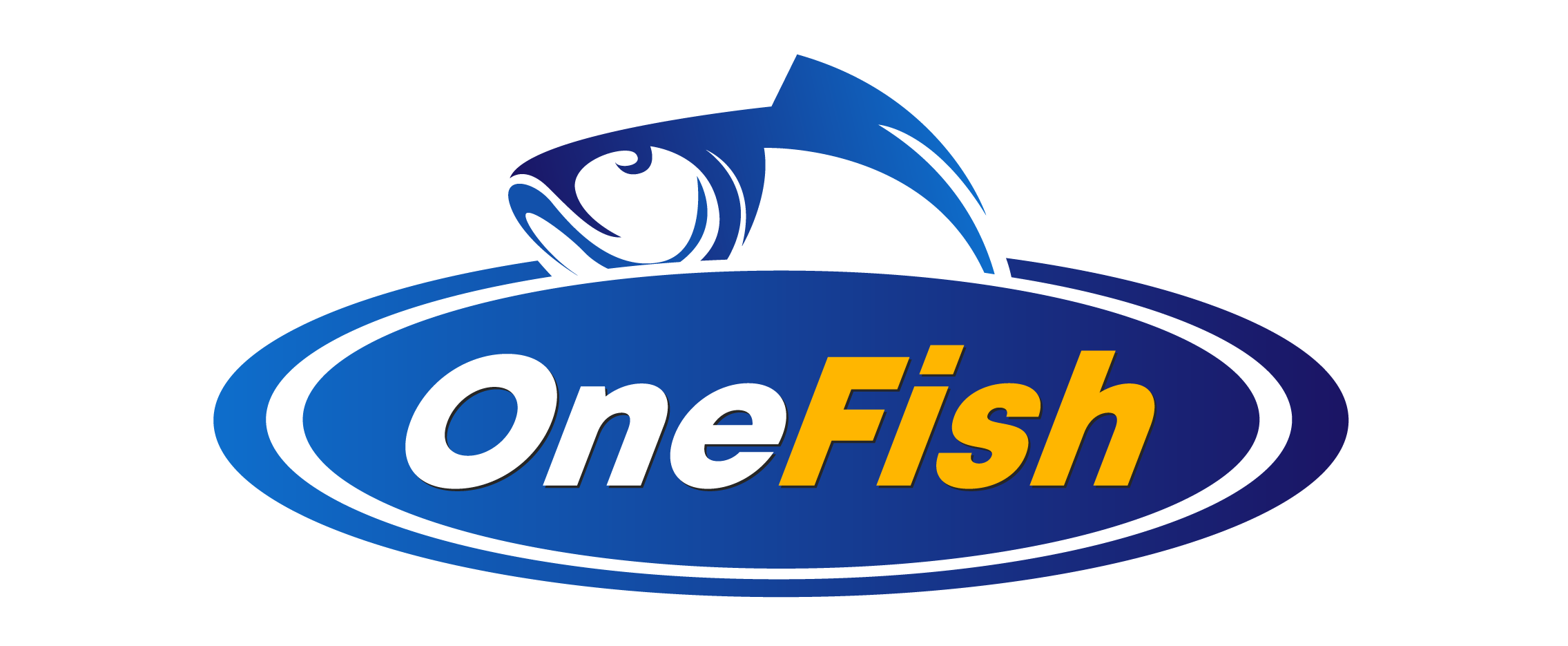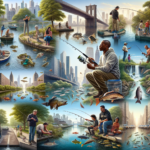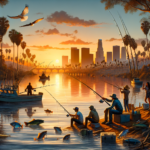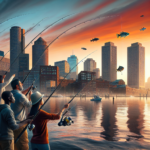Fishing in Seattle’s Puget Sound: Coastal and Urban Waters
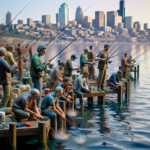
Introduction
Did you know that Puget Sound, located in the heart of Seattle, is home to over 200 species of fish? This diverse marine ecosystem offers a unique blend of coastal and urban fishing opportunities, making it a prime destination for anglers of all skill levels.
In this article, we will explore the ins and outs of fishing in Seattle’s Puget Sound. From the best fishing techniques and species information to top fishing spots and seasonal considerations, we’ll cover everything you need to know to make the most of your fishing experience in this vibrant region.
Whether you’re a seasoned angler looking to master new techniques or a beginner eager to find the best fishing spots, this guide will provide valuable insights and practical tips to enhance your fishing adventures in Puget Sound.
Background/Context
Historical or Cultural Significance
Puget Sound has a rich history deeply intertwined with the fishing traditions of the Native American tribes who have inhabited the region for thousands of years. The waters of Puget Sound have long been a vital source of sustenance and cultural heritage for these communities, with salmon fishing playing a particularly significant role.
In more recent history, Seattle’s growth as a major port city has further cemented the importance of fishing in the region. Today, Puget Sound remains a hub for both commercial and recreational fishing, attracting anglers from around the world.
Geographical Overview
Puget Sound is a complex estuarine system located in the Pacific Northwest, characterized by its deep fjords, numerous islands, and diverse marine habitats. The region experiences a temperate maritime climate, with mild, wet winters and warm, dry summers. This unique combination of geographical features and climate conditions creates an ideal environment for a wide variety of fish species.
Key Points/Details
Fishing Techniques
Technique Overview
Several fishing techniques are popular in Puget Sound, including:
- Fly Fishing: Ideal for targeting species like salmon and trout in both freshwater and saltwater environments.
- Trolling: Effective for catching larger species such as salmon and halibut by dragging lures or baited lines behind a moving boat.
- Bottom Fishing: Used to target groundfish species like lingcod and rockfish by dropping baited hooks to the seafloor.
- Jigging: Involves vertically moving a weighted lure to attract fish, commonly used for species like salmon and squid.
When and Where to Use
The best technique to use often depends on the specific location, season, and target species:
- Fly Fishing: Best in rivers and estuaries during salmon runs (typically late summer to fall).
- Trolling: Effective in open waters and nearshore areas during the summer months when salmon are more active.
- Bottom Fishing: Ideal year-round in deeper waters and rocky areas where groundfish are abundant.
- Jigging: Can be used throughout the year, particularly in areas with strong tidal currents.
Recommended Gear
For each technique, specific gear is recommended:
- Fly Fishing: 8-9 weight fly rod, floating or sinking fly line, and a variety of flies (e.g., streamers, nymphs).
- Trolling: Medium to heavy trolling rod, conventional reel with line counter, and trolling lures or bait (e.g., herring, spoons).
- Bottom Fishing: Heavy-duty rod and reel, braided line, and baited hooks or jigs.
- Jigging: Medium to heavy spinning or baitcasting rod, high-capacity reel, and metal jigs or soft plastics.
Species Information
Species Overview
Puget Sound is home to a diverse array of fish species, including:
- Salmon: Five species of Pacific salmon (Chinook, Coho, Sockeye, Pink, and Chum) are found in Puget Sound, with Chinook and Coho being the most sought after by anglers.
- Trout: Coastal cutthroat trout and steelhead are popular targets in both freshwater and saltwater environments.
- Halibut: Pacific halibut are prized for their size and taste, typically found in deeper waters.
- Lingcod: A bottom-dwelling predator known for its aggressive strikes and delicious meat.
- Rockfish: Various species of rockfish inhabit the rocky reefs and kelp forests of Puget Sound.
Best Practices
To successfully catch these species, consider the following tips:
- Salmon: Use trolling or mooching techniques with herring or artificial lures. Focus on areas with strong tidal currents and near river mouths during salmon runs.
- Trout: Fly fishing with streamers or nymphs in rivers and estuaries. Look for areas with structure, such as submerged logs or overhanging vegetation.
- Halibut: Bottom fishing with large bait (e.g., herring, squid) in deep waters (100-300 feet). Target areas with sandy or gravelly bottoms.
- Lingcod: Jigging or bottom fishing with large soft plastics or bait near rocky reefs and underwater structures.
- Rockfish: Use small jigs or baited hooks near kelp forests and rocky outcrops. Practice catch and release to help conserve rockfish populations.
Location Information
Top Fishing Spots
Some of the best fishing spots in Puget Sound include:
- Point Defiance: Located in Tacoma, this area is known for its excellent salmon fishing, particularly during the summer months.
- Edmonds Pier: A popular spot for shore fishing, offering opportunities to catch salmon, squid, and bottomfish.
- Possession Bar: Located near Whidbey Island, this area is renowned for its halibut and salmon fishing.
- Shilshole Bay: Situated in Seattle, this bay offers diverse fishing opportunities, including salmon, trout, and bottomfish.
- Hood Canal: A fjord-like arm of Puget Sound, known for its abundant shellfish and diverse fish species.
Regulations and Licenses
Before fishing in Puget Sound, it’s essential to be aware of local regulations and licensing requirements:
- Fishing License: A valid Washington State fishing license is required for all anglers aged 15 and older. Licenses can be purchased online or at local retailers.
- Catch Limits: Be sure to check the Washington Department of Fish and Wildlife (WDFW) website for current catch limits and size restrictions for each species.
- Seasonal Restrictions: Some species have specific open seasons, so it’s important to verify the dates before planning your trip.
- Marine Protected Areas: Certain areas within Puget Sound are designated as marine protected areas, where fishing may be restricted or prohibited. Consult the WDFW website for maps and details.
Seasonal Considerations
Seasonal Variations
Fishing conditions in Puget Sound can vary significantly throughout the year:
- Spring: A great time for trout fishing in rivers and estuaries, as well as early-season salmon fishing.
- Summer: Peak season for salmon fishing, with Chinook and Coho runs in full swing. Halibut and bottomfish are also active during this time.
- Fall: Continued salmon fishing opportunities, particularly for Coho and Chum. Trout fishing remains productive in freshwater areas.
- Winter: While fishing activity slows down, opportunities for squid fishing and bottomfish remain available.
Best Times to Fish
The optimal times to fish in Puget Sound often depend on the target species:
- Salmon: Early morning and late evening are typically the best times to fish for salmon, particularly during tidal changes.
- Trout: Early morning and late afternoon are ideal for trout fishing, especially in shaded areas.
- Halibut: Halibut are often more active during slack tides, when tidal currents are minimal.
- Lingcod and Rockfish: These species can be caught throughout the day, but early morning and late afternoon tend to be more productive.
Events and Tournaments
Event Overview
Puget Sound hosts several fishing events and tournaments throughout the year, including:
- Edmonds Coho Derby: Held annually in September, this popular event attracts anglers from across the region to compete for cash prizes and bragging rights.
- Everett Coho Derby: Another major Coho salmon fishing event, typically held in late September, offering substantial prizes for the largest catches.
- Puget Sound Anglers Derby: A series of fishing derbies organized by the Puget Sound Anglers association, featuring various target species and locations.
Preparation Tips
To prepare for a fishing event or tournament, consider the following tips:
- Research the Rules: Familiarize yourself with the event’s rules and regulations, including eligible species, catch limits, and weigh-in procedures.
- Pre-Fish the Area: Spend some time fishing the event location in advance to identify productive spots and refine your techniques.
- Check Your Gear: Ensure your gear is in top condition, with fresh lines, sharp hooks, and well-maintained reels.
- Plan Your Strategy: Develop a game plan based on the target species, expected conditions, and your strengths as an angler.
Tips and Best Practices
General Tips
Here are some general tips to enhance your fishing experience in Puget Sound:
- Stay Informed: Keep up to date with local fishing reports and weather forecasts to plan your trips effectively.
- Be Patient: Fishing can be unpredictable, so patience and persistence are key to success.
- Respect Other Anglers: Practice good etiquette by giving fellow anglers plenty of space and avoiding conflicts on the water.
Avoid Common Mistakes
To avoid common mistakes, consider the following advice:
- Check Regulations: Always verify current fishing regulations and catch limits to avoid fines and penalties.
- Use the Right Gear: Match your gear to the target species and fishing technique to improve your chances of success.
- Pay Attention to Tides: Understanding tidal patterns can significantly impact your fishing success, particularly in saltwater environments.
Advanced Techniques
For more experienced anglers, consider these advanced techniques:
- Downriggers: Use downriggers to precisely control the depth of your lures when trolling for salmon and other species.
- Electronics: Invest in fish finders and GPS units to locate fish and navigate effectively.
- Live Bait: Experiment with live bait, such as herring or sand shrimp, to attract more fish and increase your catch rates.
Gear and Equipment Recommendations
Essential Gear
The essential gear for fishing in Puget Sound includes:
- Rods and Reels: Medium to heavy rods and reels suitable for the target species and fishing techniques.
- Lines: Braided or monofilament lines with appropriate strength for the target species.
- Lures and Bait: A variety of lures and bait, including spoons, jigs, flies, and live bait.
- Tackle Box: A well-organized tackle box with hooks, sinkers, swivels, and other essential accessories.
Optional Gear/Upgrades
Consider these optional gear upgrades to enhance your fishing experience:
- Downriggers: For precise depth control when trolling.
- Fish Finders: To locate fish and underwater structures more effectively.
- Kayaks or Small Boats: For increased mobility and access to remote fishing spots.
Where to Buy or Rent
You can purchase or rent fishing gear from local shops such as:
- Outdoor Emporium: A well-stocked fishing and outdoor gear store in Seattle.
- Sportco: Located in Fife, offering a wide range of fishing equipment and supplies.
- West Marine: Multiple locations in the Seattle area, specializing in marine and fishing gear.
Safety and Conservation
Safety Tips
To ensure a safe fishing experience in Puget Sound, follow these safety tips:
- Check Weather Conditions: Always check the weather forecast before heading out, and be prepared for sudden changes.
- Wear Life Jackets: Always wear a life jacket when fishing from a boat or kayak.
- Avoid Hazardous Areas: Be aware of strong currents, underwater hazards, and restricted zones.
Conservation Practices
Promote sustainable fishing practices by following these conservation guidelines:
- Catch and Release: Practice catch and release for non-target species and undersized fish to help maintain healthy populations.
- Respect Wildlife: Avoid disturbing marine wildlife and their habitats.
- Follow Regulations: Adhere to local fishing regulations and catch limits to support conservation efforts.
Planning Your Trip
Accommodations
Consider staying at these accommodations near popular fishing spots:
- The Edgewater Hotel: A waterfront hotel in Seattle offering stunning views of Puget Sound.
- Silver Cloud Inn – Mukilteo: Located near Possession Bar, providing easy access to prime fishing areas.
- Alderbrook Resort & Spa: A luxurious resort on Hood Canal, perfect for a relaxing fishing getaway.
Travel Tips
To make your trip to Puget Sound more enjoyable, consider these travel tips:
- Plan Your Route: Use GPS and online maps to plan the best routes to your fishing destinations.
- Check Ferry Schedules: If traveling to islands or remote areas, check ferry schedules in advance to avoid delays.
- Pack Accordingly: Bring appropriate clothing, gear, and supplies for the expected weather conditions and fishing activities.
Additional Activities
If you have non-fishing time or are traveling with family, consider these additional activities in the area:
- Pike Place Market: Explore Seattle’s iconic market, offering fresh seafood, local produce, and unique crafts.
- Seattle Aquarium: Learn about the marine life of Puget Sound and the Pacific Northwest.
- Hiking and Nature Trails: Enjoy scenic hikes and nature walks in nearby parks and wilderness areas.
Frequently Asked Questions (FAQs)
Do I need a fishing license to fish in Puget Sound?
Yes, a valid Washington State fishing license is required for all anglers aged 15 and older. Licenses can be purchased online or at local retailers.
What are the best times of year to fish in Puget Sound?
The best times to fish in Puget Sound vary by species. Summer is peak season for salmon, while spring and fall offer excellent trout fishing. Halibut and bottomfish can be targeted year-round.
What gear do I need for salmon fishing in Puget Sound?
For salmon fishing, you’ll need a medium to heavy trolling rod, a conventional reel with a line counter, and trolling lures or bait such as herring or spoons. Downriggers can also be helpful for controlling lure depth.
Are there any fishing tournaments in Puget Sound?
Yes, Puget Sound hosts several fishing tournaments throughout the year, including the Edmonds Coho Derby, Everett Coho Derby, and various events organized
